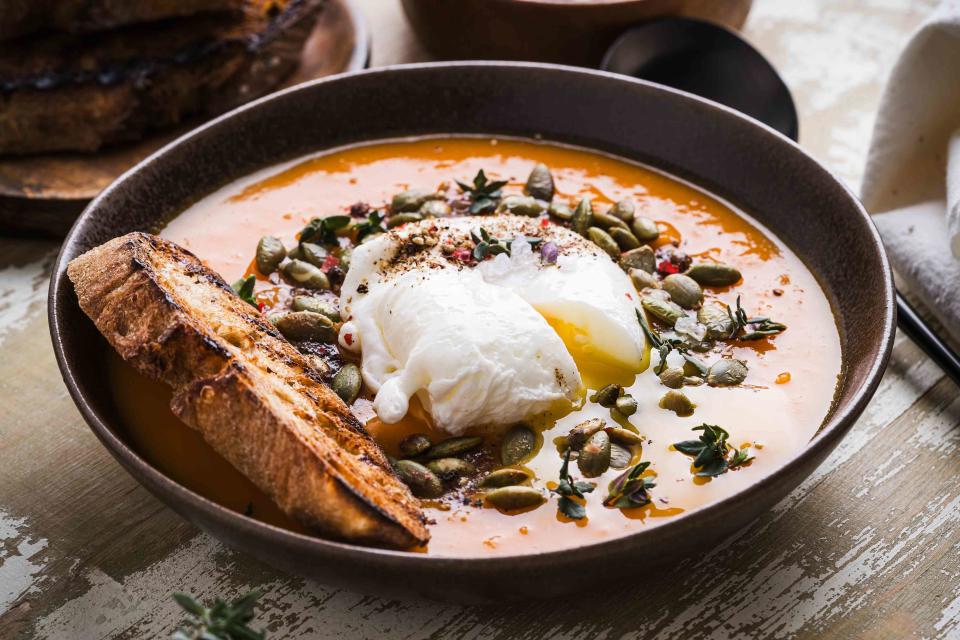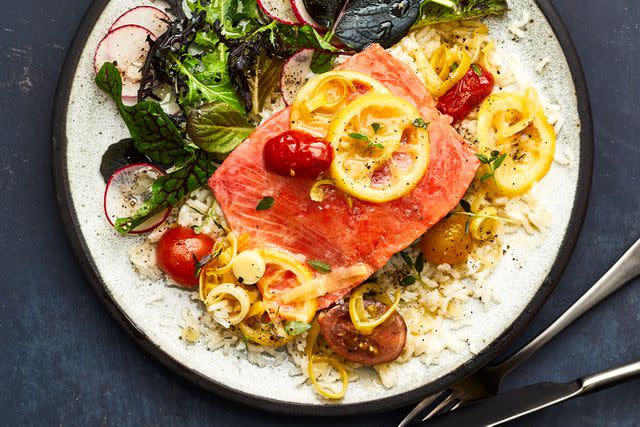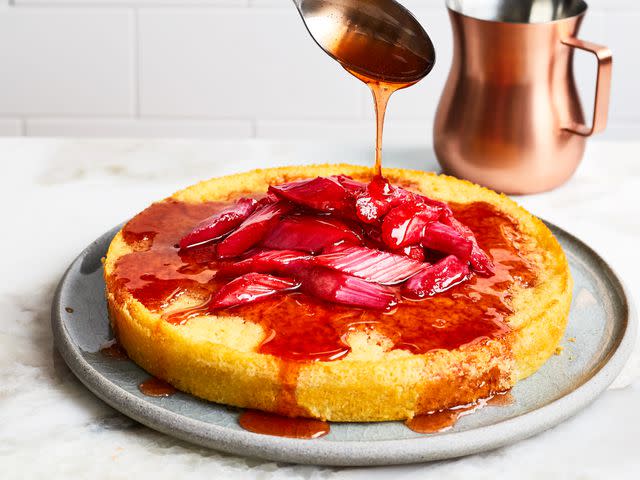How to Poach Eggs, Seafood, and Meat Like a Pro
This time-honored cooking technique is key to preparing delicate seafood, meat, and eggs.

istetiana / Getty Images
While boiling and simmering are popular cooking techniques, there’s a happy middle between the two, and that’s poaching. Poaching is when you submerge food in hot but not boiling liquid and cook it over low heat until your ingredients — often eggs, seafood, or chicken — are just barely cooked. This delicate cooking technique imparts flavor, especially if there are aromatics in your poaching liquid, while also maintaining a delicate texture in your food.
What are the best foods to poach?
The best foods to poach are those that benefit from this gentle cooking technique. Eggs might be the most popular of all foods to poach, for Eggs Benedict, Poached Eggs with Red Wine Sauce, and other recipes. Salmon, chicken, and fruit are also delicious when poached. In the 90s, poaching became popular for its ability to cook food without fat while still producing a moist product. However, poaching is a technique that’s long been used by chefs to create and/or maintain a delicate texture in foods while still cooking them to a safe temperature.
Related: How to Poach an Egg Perfectly Every Time

What are the types of poaching?
There are three types of poaching techniques: shallow poaching, deep poaching, and par-poaching.
Shallow poaching
Shallow poaching involves cooking the food just partially submerged in liquid, often in combination with steam harnessed by covering the pan with a lid or a piece of parchment paper cut to fit inside the pan, with a hole in the center to allow steam to release. The parchment paper cover is called a cartouche in French; it translates to “paper lid.” The lid or cartouche traps the steam while allowing for a little evaporation, which means you can have less liquid in the pan. The liquid is often reduced into a sauce after you are done poaching the main ingredient. Some chefs spread butter on the bottom of the cold pan before adding the poaching liquid to enrich the poaching liquid and the final sauce, though you can simply add butter to the reduced liquid at the end to finish your sauce. Try this cooking method to make Shallow Poached Salmon with Leek Beurre Blanc.
Deep poaching
Deep poaching, also called submersion poaching, means the food is fully submerged in the liquid while cooking. In this case, there is no need to cover the pan to trap steam, however, if your ingredients float in the poaching liquid, using a cartouche cut to fit inside the pan will help keep the ingredients submerged. Tom Colicchio uses the deep poaching method in his recipe for Poached Peaches with Baked Ricotta to ensure the peaches cook evenly and the skins will remove easily after they poach.
Par-poaching
Par-poaching is like deep poaching except that the pan is removed from the heat source before the food is fully cooked. The food sits in the hot poaching liquid off the heat to finish cooking. This is the gentlest way to poach, as it puts only the most minimal heat on the ingredient, allowing for the most delicate texture. It works well in recipes like this Poached Chicken and Roasted Acorn Squash that call for poached chicken breasts, which can become stringy and chewy when overcooked.

What kind of liquid do you use to poach?
Poaching often uses water, wine, leftover wine, verjus, stock, or broth, but you can also poach in cream, milk, coconut milk, and citrus juice. After picking your poaching liquid, season it with butter, vinegar, citrus, onions, or herbs. Spices are a great way to flavor your liquid and even give it some color (adding turmeric to the poaching liquid gives it a vibrant color, like in Brooke Williamson's Turmeric-Poached Eggs with Chive Biscuits and Lobster Gravy). The combinations are endless and allow you to get really creative as you cook.
You can also poach entirely with olive oil or butter. While butter isn’t exactly a liquid, it melts into a decadent poaching base, especially for recipes like Oil-Poached Tuna and Butter-Poached Lobster. When poaching in oil or butter, you cook at a low temperature only until the food is done. It is different from confit cooking, which involves cooking for a long time until the food has broken down or is very, very soft.
How to poach any food
Heat your poaching liquid, and any aromatics or flavorings, in a pot or high-sided skillet until just barely simmering, then add the food that you want to poach, such as eggs, chicken, fish, or fruit. The poaching liquid is then kept at a low temperature, between 160°F and 184°F, which is high enough to cook the food but low enough that it’s not boiling, which is 212°F. This low cooking temperature allows for the food to have a soft and tender texture but still be safely prepared. Keep the temperature just below simmering, and poach your food until it is tender and cooked to your desired doneness.

What is the difference between poaching, sous vide, and simmering?
While all three techniques involve a pot of water, there are nuances. Sous vide translates to “under vacuum” in French and involves placing food in a vacuum-sealed bag before cooking in a temperature-controlled water bath. While there can be aromatics and herbs placed in the vacuum-sealed bag along with the food, the food does not touch the water bath as if it was being poached in liquid. Additionally, cooking sous vide generally occurs at a lower temperature, between 130°F to 165°F, then poaching.
Related: Sous Vide Cooking at Home Is Easier Than You Think
Simmering is defined as cooking in a liquid that’s just barely bubbling around the edges of the pan and means the temperature of the liquid ranges between 185°F to 205°F. Poaching occurs at a lower temperature, at approximately 160°F to 184°F, therefore cooking food at an even lower, gentler temperature then simmering.
For more Food & Wine news, make sure to sign up for our newsletter!
Read the original article on Food & Wine.

